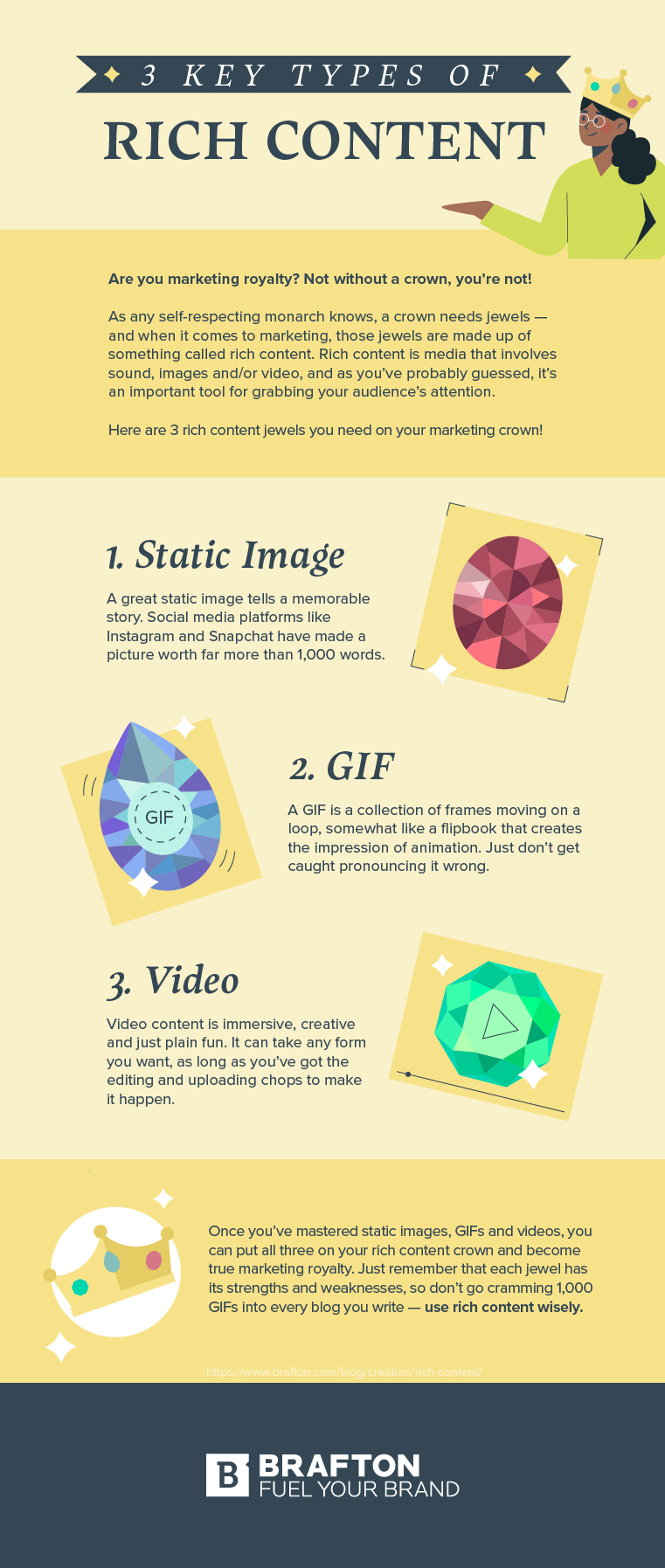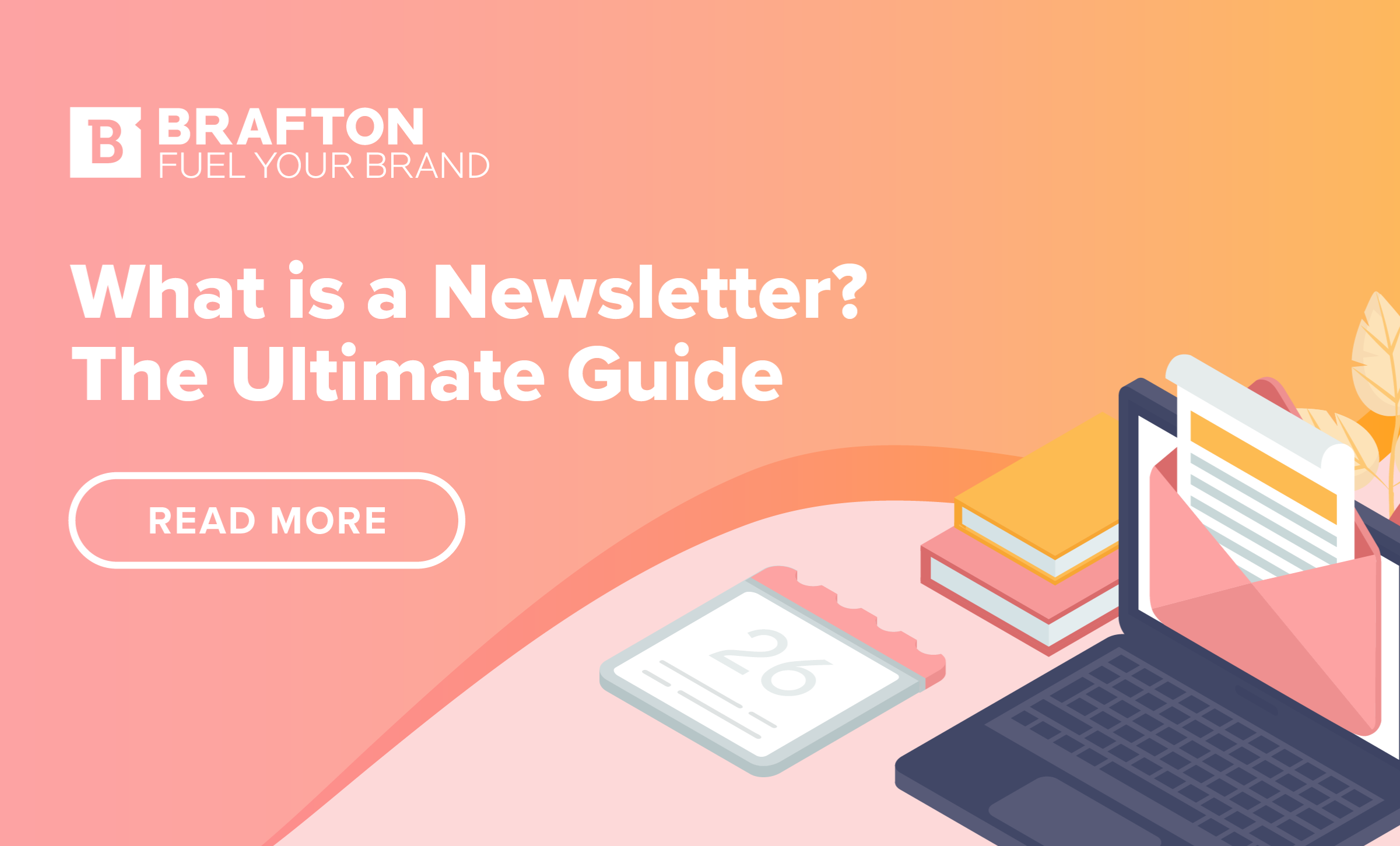Rich content is everywhere, and it’s demanding attention all the time. Buyers are becoming increasingly inundated with content everywhere they go, between news, ads, product placements, videos, infographics, newsletters…
And that’s because rich, visual content stands out.

What Is Rich Content? Definitions and Key
Rich content consists of media that involves sound, images and/or video. It’s content that stands out because of visual flair and design. It’s content that takes advantage of the sensory features of the viewer.
Some examples of rich content are:
- Static images.
- Animated GIFs.
- Videos.
- Audio clips.
So, what’s the difference between rich content and normal content?
Normal content is usually text-based. Think of text-only social media posts or blogs. Though these formats can inform and even encourage interaction with your brand, there’s not much visual flair to them. That’s why text-based content is used in conjunction with rich content, creating a combination that’s both engaging and informative.
You’ll most likely find rich content in blog content, on social media and in emails, from ads, to promotions and newsletters.
Subscribe to
The Content Marketer
Get weekly insights, advice and opinions about all things digital marketing.
Thank you for subscribing to The Content Marketer!
How Rich Media Can Enhance Your Marketing Strategy
Rich content is engaging. It catches the attention of your audience and will hold it if done right. Let’s look at a few different types of media and how it could be effective for your messaging.
Static Image
This is likely the most common piece of rich content you’ll see when scrolling through social media or browsing your email. They say a picture is worth… well, you know. But to some degree, it’s true.
A static image can tell a story, getting your messaging and branding across without saying a single word. If you’re advertising your product or service, the viewer is going to have a much better understanding of what it is by seeing it, especially if the image shows the context in which the product or service is supposed to be used.
After all, Instagram ads would be nothing without an engaging image.
Animated GIF
A GIF is a collection of frames that change in a pre-set duration, giving the impression of animation. GIFs are hard to escape because they’re everywhere. There’s bound to be an animated Michael Scott from “The Office” somewhere in your group chats.
The great thing about GIFs is you can fit a larger amount of information in them than static images. Maybe you want to create a moving image of your product in action to get the point across, or maybe you want to share a relatable GIF on social media to make your brand seem more approachable.

GIFs are a great way to break up copy in an email or blog and the file size isn’t much larger than that of a static image, which keeps loading times down on your web page and emails.
Video
There’s no more immersive way to connect with your audience than through video content. Break down how to use your product, show customer testimonials, promote how your company is pushing your industry forward; the possibilities are endless.
Video example.
You can embed videos in your email newsletter and share them on social media. You can even take longer form videos and chop them up for separate posts to get the most mileage out of them.
Video is easily the most engaging medium when it comes to rich content, but it takes the most effort and renders a much larger file size, making it complicated to edit and upload compared to other mediums.
Creating Eye-Popping Rich Content With Your Prospects in Mind
Your approach with rich content will depend on a variety of factors. The fundamental idea of rich content is to be attention grabbing, but it’s particularly effective when made with your target audience in mind.
Your target audience is who’s most likely to use your product or service, and therefore, the target for your content. You want to make content that’s most appealing to them, not only in its format, but in information as well.
Rich content works because it’s easier to consume than a wall of text. Rich content is likely to be your brand’s first impression for a lot of prospects, especially if they’re coming to your website from social media or email.
After that, they’ll be more inclined to read content like your blogs or eBooks. That’s when prospects willingly gravitate to your brand and may come back to you when they’re in the market for a product or service like yours.
Rich content can be the key to pulling people toward your brand and can greatly improve customer engagement. Next time you’re scrolling through social media, be conscious of what draws your attention. The answer may (or may not) surprise you.






